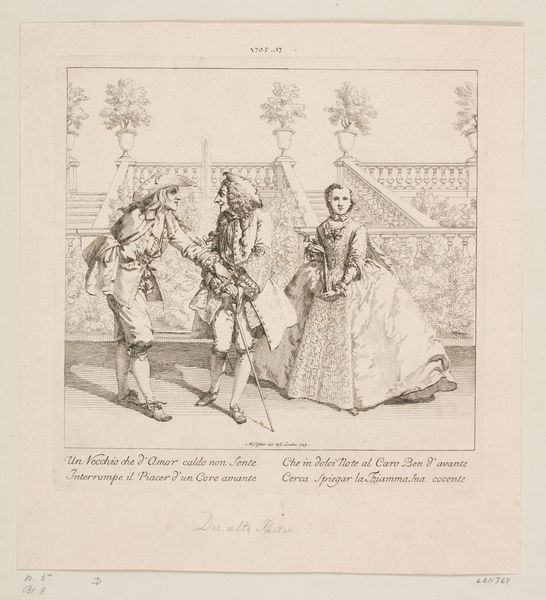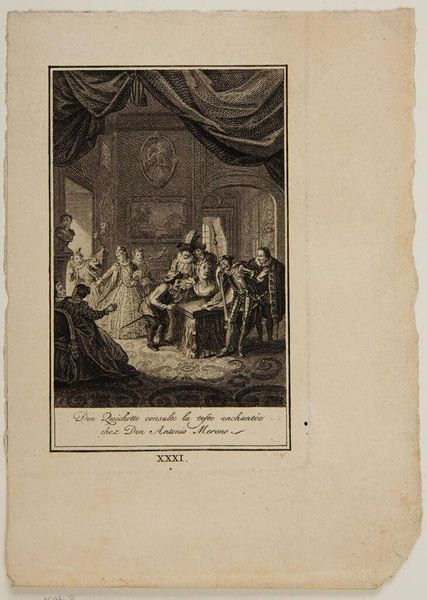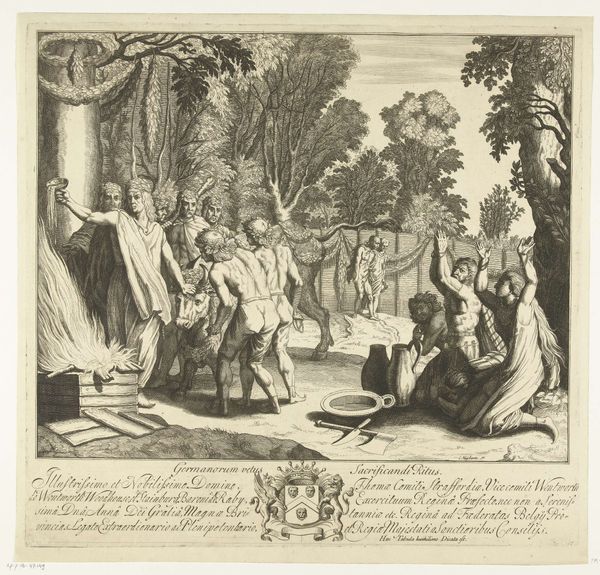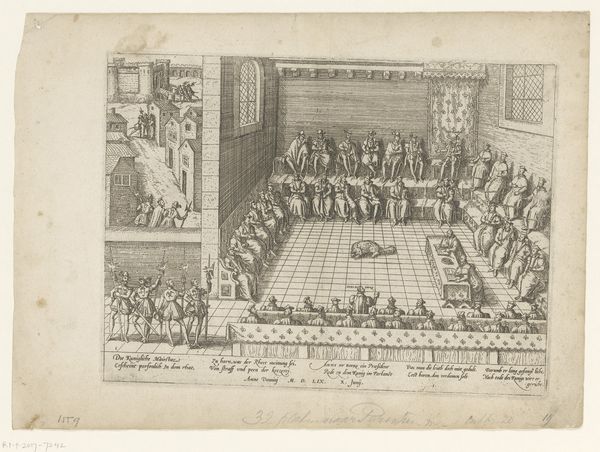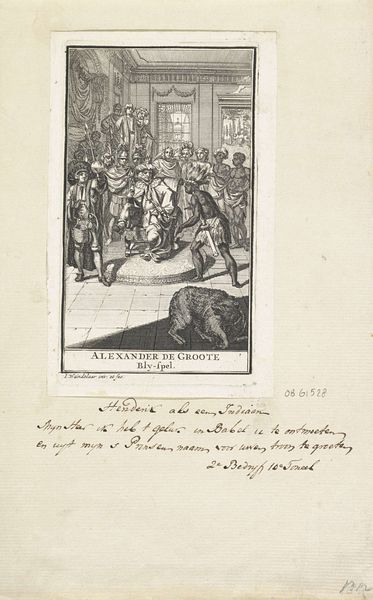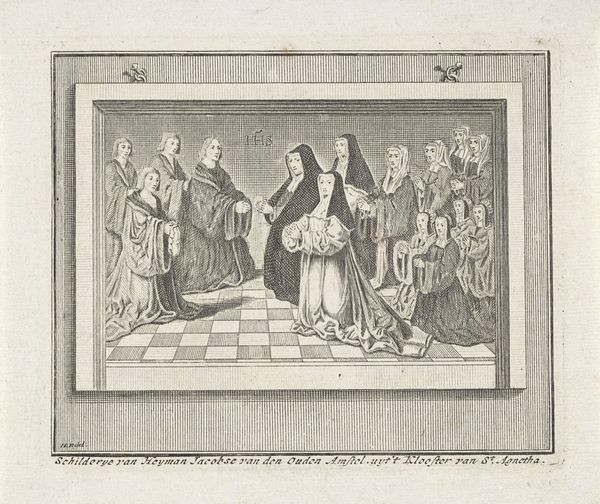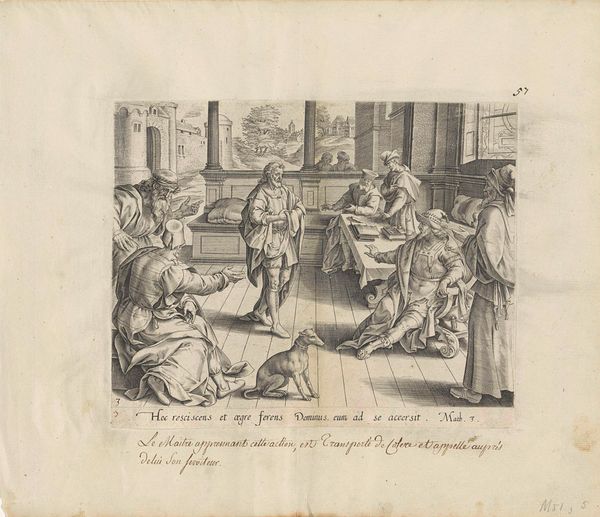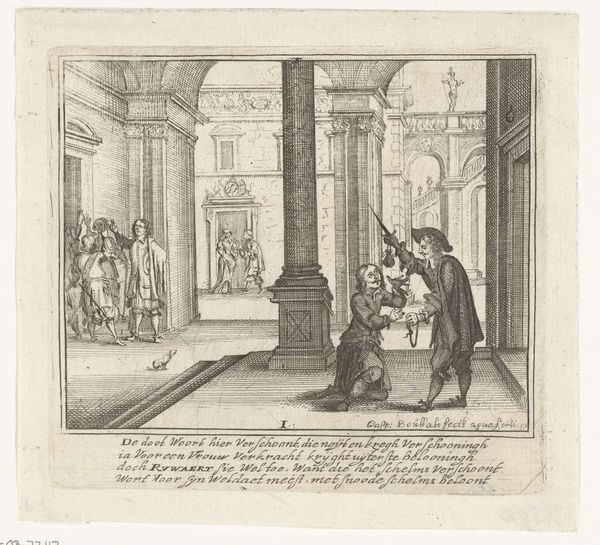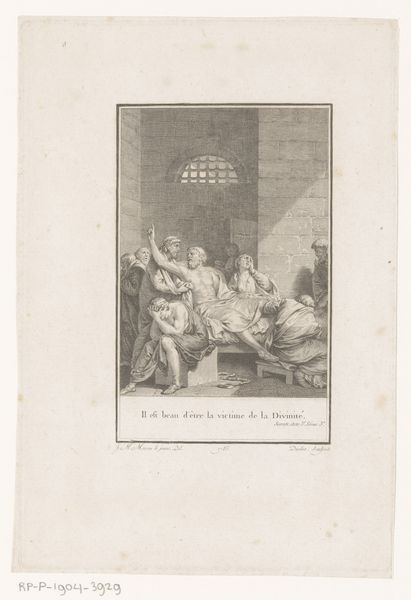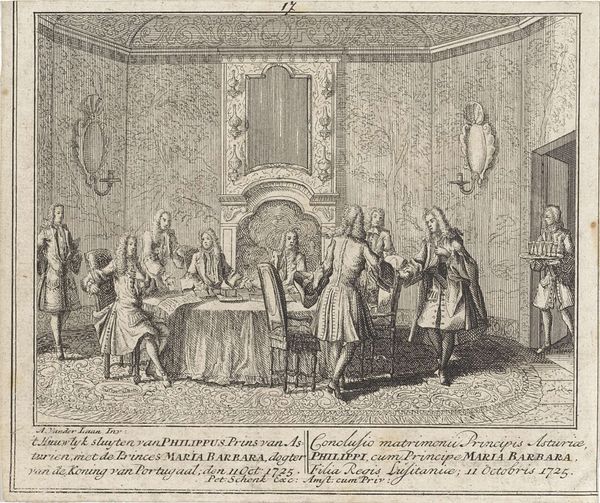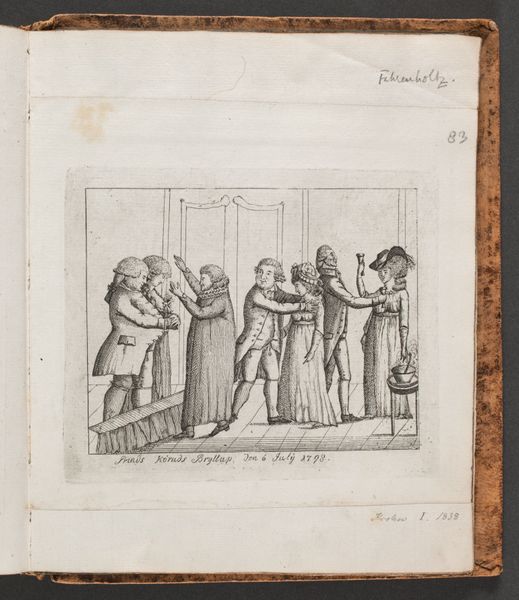
drawing, watercolor
#
drawing
#
water colours
#
narrative-art
#
dutch-golden-age
#
figuration
#
watercolor
#
coloured pencil
#
genre-painting
#
miniature
Dimensions: height 454 mm, width 318 mm
Copyright: Rijks Museum: Open Domain
This intriguing watercolor, "Het Nijmeegse Raadsel of het Gecompliceerde Huwelijk," created in 1619 by H.C. Mêgert, presents a puzzle of symbols rooted in the societal intricacies of marriage and family. Notice the checkered floor—a motif recurring through art history, often symbolizing the duality of life's path, balancing light and dark, good and evil. The prostrate figure contrasts sharply with the standing figures who join hands, perhaps signifying a transition or agreement. The motif of clasped hands, present here, echoes in ancient Roman art as a symbol of concordia, of unity and agreement. Yet, here, there's an unsettling stillness. This gesture of union, intended to evoke harmony, feels overshadowed by the ambiguous figures, hinting at hidden discord. This tension creates an atmosphere that engages our subconscious, inviting us to consider the complexities of human relationships. The checkered floor, the clasped hands—these are not isolated emblems but cyclical echoes, resurfacing through time, adapting to new narratives, and stirring deep-seated emotional responses.
Comments
No comments
Be the first to comment and join the conversation on the ultimate creative platform.
